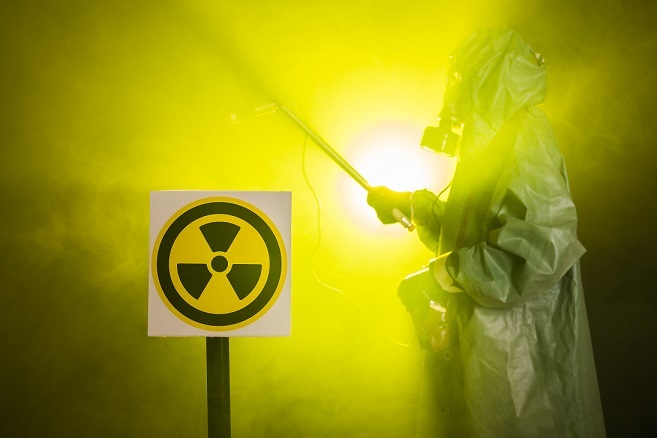
 Data Structure
Data Structure Networking
Networking RDBMS
RDBMS Operating System
Operating System Java
Java MS Excel
MS Excel iOS
iOS HTML
HTML CSS
CSS Android
Android Python
Python C Programming
C Programming C++
C++ C#
C# MongoDB
MongoDB MySQL
MySQL Javascript
Javascript PHP
PHP
- Selected Reading
- UPSC IAS Exams Notes
- Developer's Best Practices
- Questions and Answers
- Effective Resume Writing
- HR Interview Questions
- Computer Glossary
- Who is Who
What You Need to Know About Radiation and Radiation Safety?
Introduction
Radiation can be defined as a form of electromagnetic wave that can travel through a vacuum or any other medium. They have both particles as well as wave nature. Since they can travel in a vacuum so, they can travel through space and can reach us and can even penetrate various substances including the human body.

Radiations can be natural like cosmic rays or can be man-made like X-rays. Long-term exposure to radiation can be lethal and can even induce cancer in humans therefore, it is very important to protect ourselves from such radiation which can be lethal, and this is called radiation safety.
Radiation
Just like light radiation is also a form of energy that we obtain from the sun and travels in the form of waves and particles. Depending on the particles that are radiated, radiation is of two types ?
Ionizing radiations.
Non-ionizing radiations.
Ionizing Radiations
These are radiations that generally have very high energy in the range of 10ev, so high that it can ionize atoms. Ionization is the phenomenon in which electrons are pushed out or knocked out from the shell of the atom. After the electron has been removed the atom is left with a positive charge on it.
Overexposure to these radiations can cause cancer in organisms as they can potentially damage the DNA of the cells.
-
They can be produced by the radioactive decay of some radioactive materials. It can be produced in any of the following forms ?
Alpha Radiations: when an atom undergoes radioactive decay by emission of protons alpha radiations are produced. They are less penetrating and can be blocked even by a piece of paper.
Beta Radiations: when an atom undergoes radioactive decay with the emission of electrons or positrons, beta radiations are produced. They can penetrate through the skin.
Gamma Radiations: they are produced due to the dissociation of atomic nuclei of some elements. They can easily penetrate through the skin and are damaging. They cannot be blocked.
X-Rays: They are produced as a result of changes in the energy of the electrons. They are similar to gamma radiations and are penetrating and damaging.
Neutron Radiations: they are produced by the emission of neutrons and can travel long distances. They can be blocked by hydrogen-rich materials.
Non-Ionizing Radiations
They have very low energy, so low that they cannot remove electrons from the atoms. They can just cause heating of the substance and can cause harm only to the surfaces which can absorb them. Some examples of non-ionizing radiation include infrared radiation, ultraviolet rays, visible rays, microwaves, radio waves, and low-frequency waves.
Since some of the ionizing radiations are dangerous and can pose potential health effects, they should be handled in a safe environment to avoid exposure to such radiations. That is included in the radiation safety.
Radiation Safety
Importance of Radiation Safety
Most of the radiations are penetrating and can cause potential damage to the DNA and can also induce cancerous cells and may lead to death. So it is always advisable to minimize the exposure of the body to these radiations. When a person is working with radiation it becomes important to follow the safety precautions to avoid the damaging effects of these radiations.
ALARA - As Low as Reasonably Achievable
The most important principle on which radiation safety depends is ALARA which is an abbreviation of "As Low as Reasonably Achievable". It means that even if the dose of the radiation is small it is always good to avoid it if it does not directly benefits you. To achieve this principle, it is important to follow these three protective measures, which are as follows-
Time
It refers to minimizing the time spent near the radiation source. It is always advisable to finish the work pertaining to the radiations as soon as possible and leave that workplace immediately after finishing the work. Dosimeter alarms should be installed to help decrease the time spent in areas with elevated levels of radiation.
Distance
It is the measure of closeness to the radiation source. Distance should be maximum from the radiation source. As the distance between the radiation and the person increases, the dose of the radiation decreases.
Shield
It refers to the layer of protection between the person and radiation. The first layer of protection for the person in contact with the radiation is the protective clothing which can effectively block alpha and beta radiations but is ineffective against gamma radiations. A wall or a fire truck can also act as a shield against the radiation.
Conclusion
Radioactive materials and radiation are used in several places like in atomic plants, hospitals, laboratories, etc. but with these uses they also impose a threat to life by causing damage to DNA and causing cancer. Not all types of radiation are dangerous but those which are dangerous should be handled with caution and hence one must follow the safety precautions to avoid their harmful effects.

